Takenoko Gohan is a Japanese rice dish that allows you to fully enjoy the flavor and texture of bamboo shoots. Experience the exquisite harmony between rice and bamboo shoots.
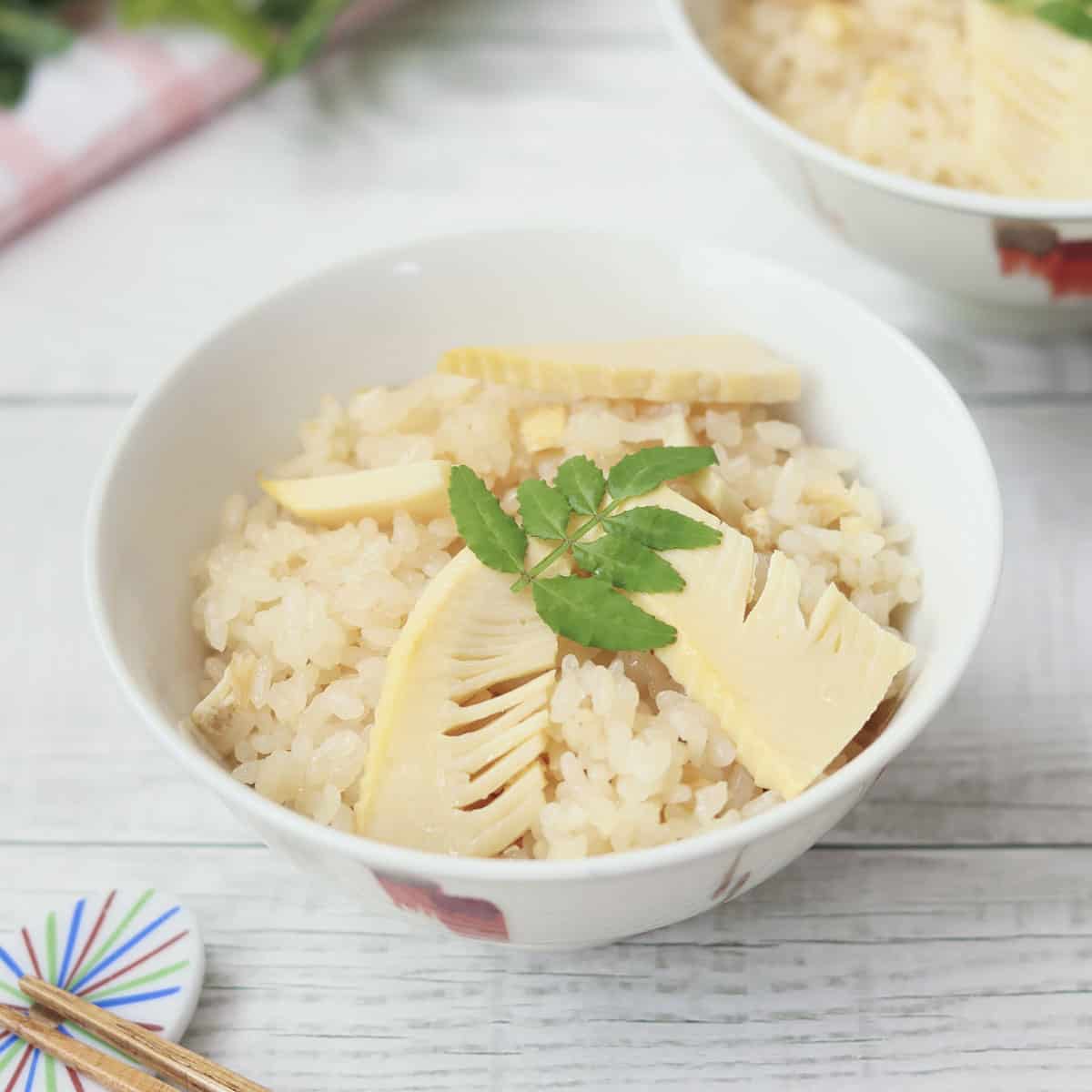
Jump to:
What is Takenoko Gohan?
Takenoko Gohan is a Japanese mixed rice dish made by cooking rice together with boiled bamboo shoots. "Takenoko" means bamboo shoots, and "Gohan" refers to cooked rice. It is particularly popular in Japan as a spring dish when bamboo shoots are in season.
While this dish is commonly made using fresh bamboo shoots in Japan, I'm sharing a recipe here that uses packaged pre-boiled bamboo shoots. This is because fresh bamboo shoots tend to develop a strong bitter taste as time passes after harvest, especially if you live in an area where bamboo shoots do not naturally grow, making it quite challenging to obtain them.
Fresh bamboo shoots need to be boiled with rice bran or in plenty of water to remove the bitter taste, but packaged bamboo shoots have had this bitterness removed, making the cooking process simpler. Enjoy the delightful combination of bamboo shoots and rice easily.
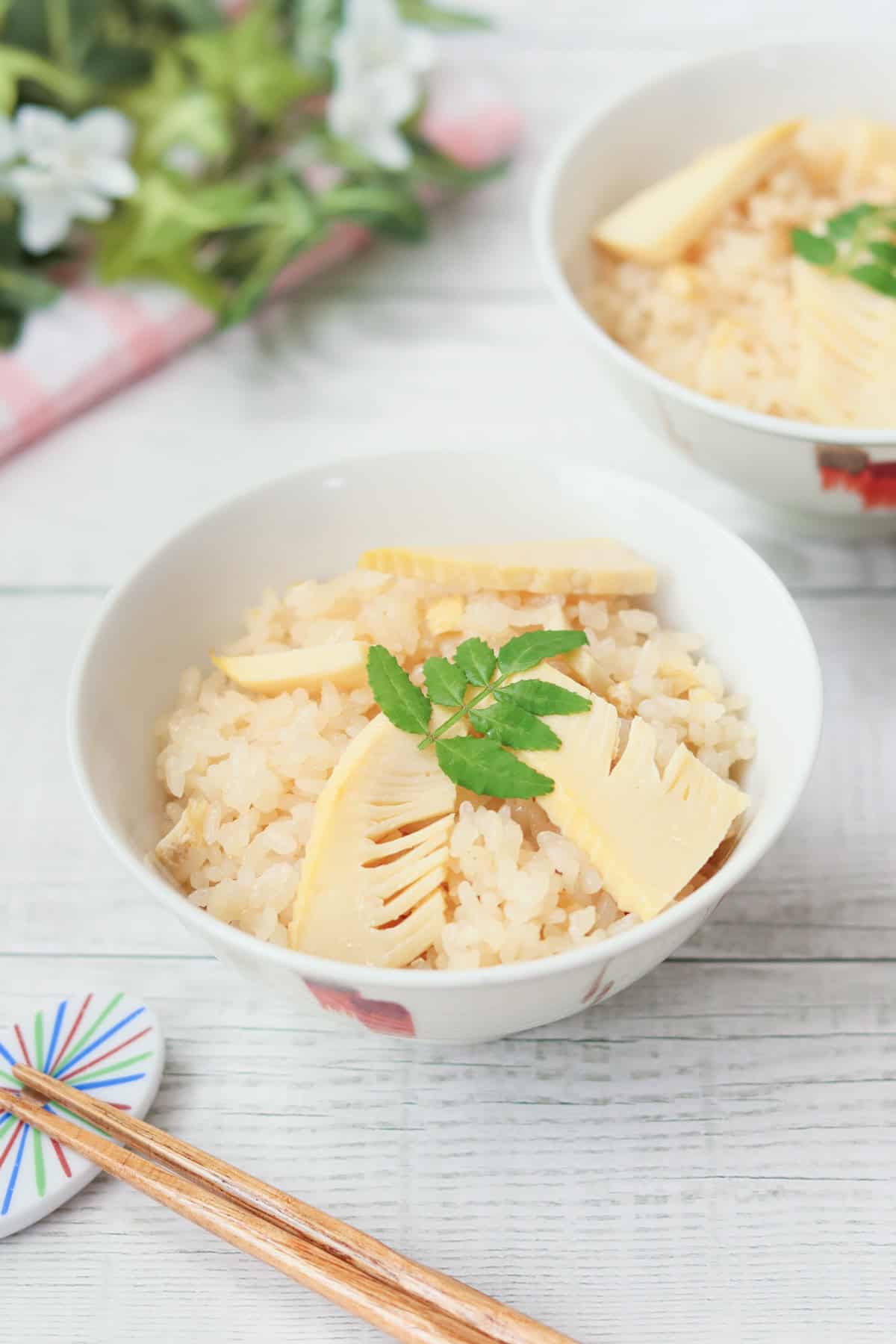
The harmony of combinations
There is a reason why bamboo shoots pair well with rice.
Bamboo shoots contain an umami component called tyrosine. This tyrosine not only activates the brain and boosts motivation but also enhances fatigue recovery when consumed with glucose.
In other words, it makes sense to eat bamboo shoots, which are rich in tyrosine, with rice that turns into glucose during digestion. Due to their benefits, this dish is also known as a suitable choice for coping with newcomer stress and SAD (Seasonal Affective Disorder) in Japan.
By the way, when you cut bamboo shoots, you might find white clumps attached to them; these are crystallized tyrosine. You can eat them as they are, but if you are concerned about their appearance and texture, feel free to remove them.
Additionally, the black spots on bamboo shoots are natural pigmentation. They are safe to eat.
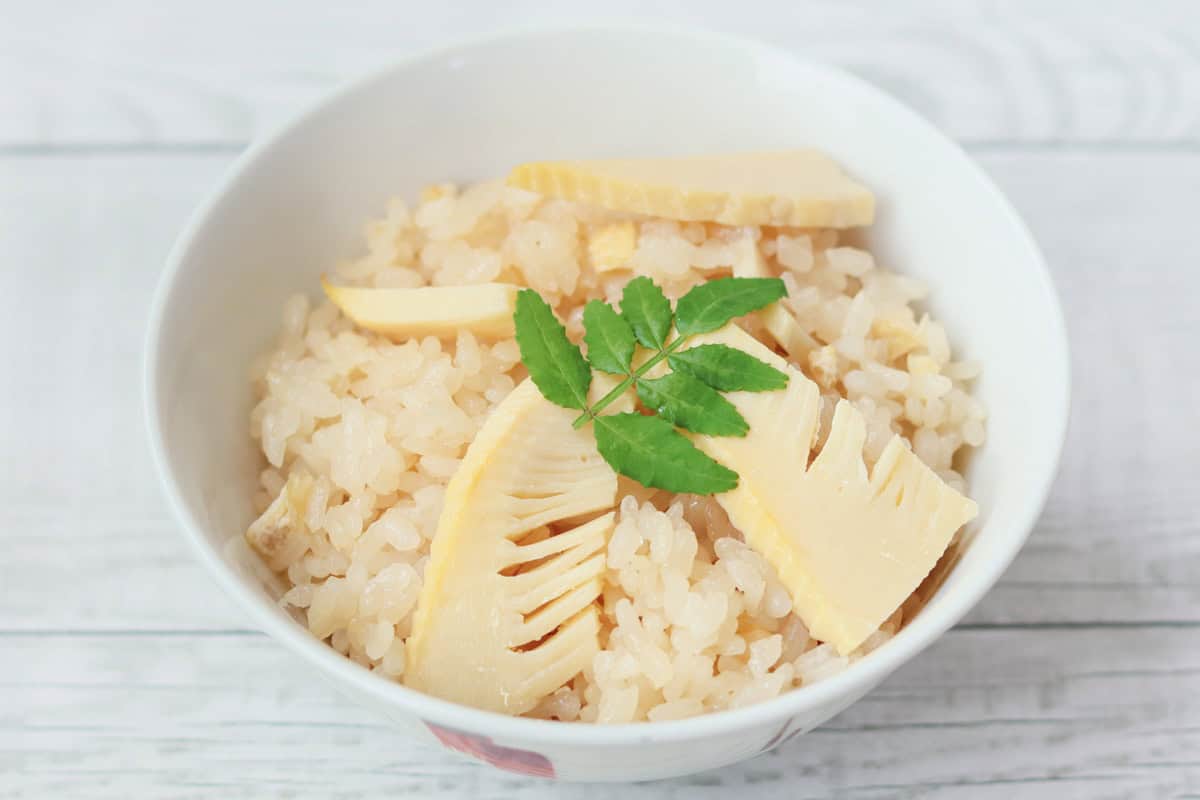
Exploring how to cut bamboo shoots
Bamboo shoots have the characteristic of being harder toward the base and softer toward the top, so you want to be particular about how you cut them.
For the bottom to middle section, it is recommended to slice them against the fibers. This allows you to enjoy the texture of bamboo shoots while retaining their moderate degree of firmness.
On the other hand, for the upper section, it is best to cut them in a way that preserves their fibers. By not cutting through the fibers, you can enjoy the crunchy texture.
To give it a richer flavor
When using packaged pre-boiled bamboo shoots instead of fresh ones, the bamboo flavor tends to be weaker. Therefore, when making takenoko gohan with pre-boiled bamboo shoots, it is recommended to add aburaage (deep-fried tofu sheets) or ground chicken to enhance the richness of the dish. In this recipe, I used aburaage.
When adding aburaage, it is advisable to finely chop it so it doesn't interfere with the texture of the bamboo shoots. If using ground chicken, add about 3.5 ounces (100g). These ingredients are also often used when preparing this dish with fresh bamboo shoots.
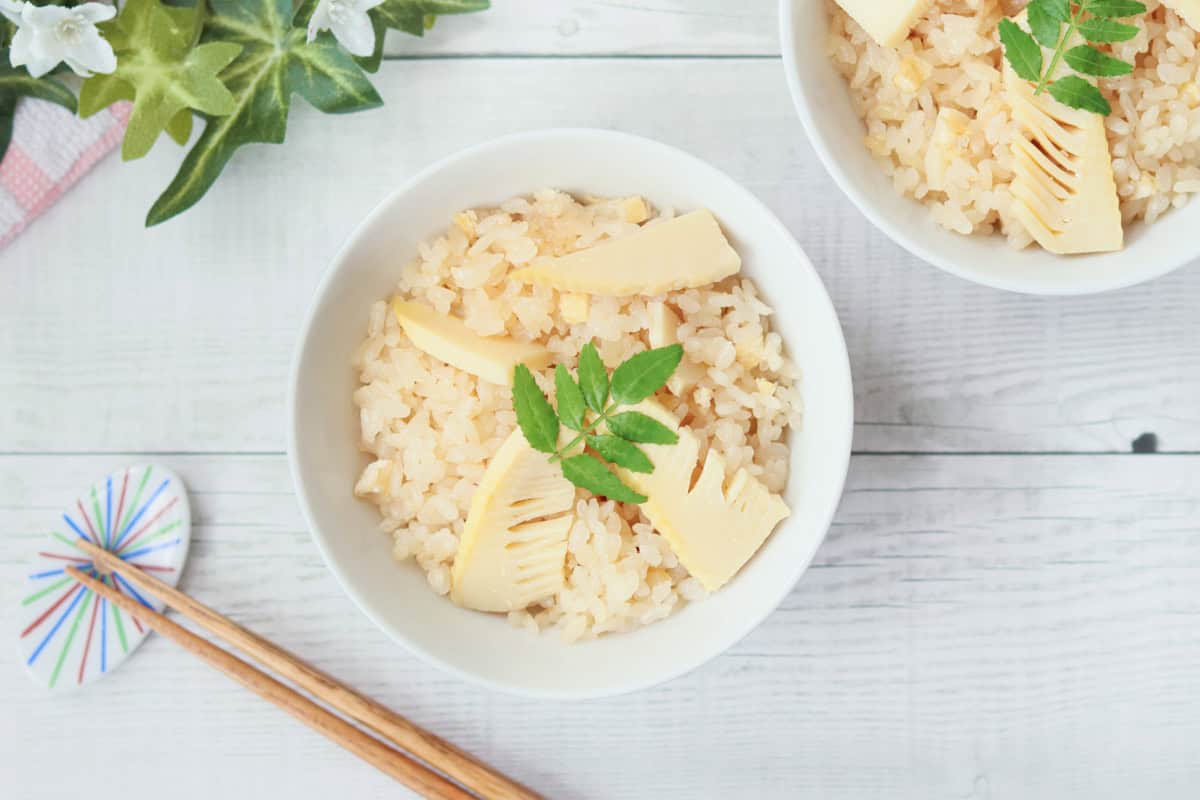
Cooking tools
The tool you need to make this dish is the same as the one used to cook regular Japanese rice: a pot or a rice cooker. In Japan, while most households have a rice cooker, it is less common outside of Japan, so I’m sharing a recipe using a pot here. Of course, you can also use a rice cooker; in that case, simply replace the pot with the rice cooker in the recipe.
To learn more about How to Cook Japanese Rice on the Stove, please refer to the linked page.
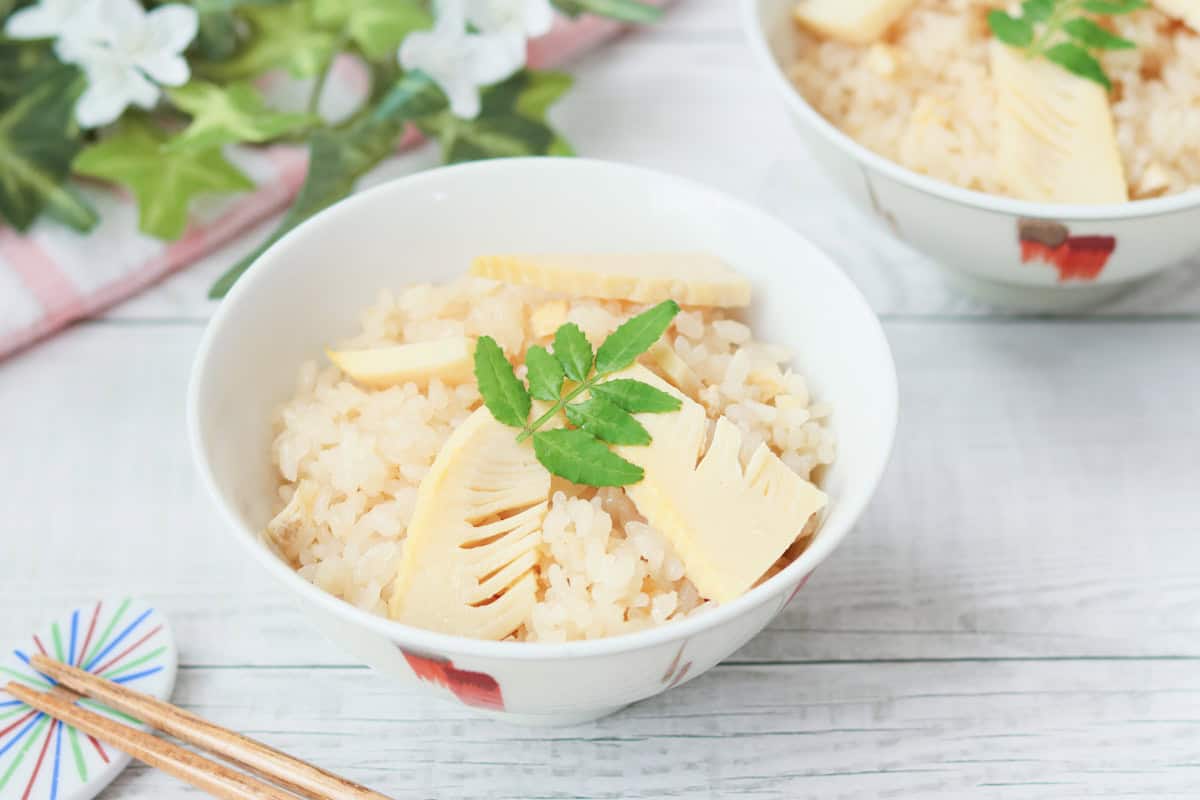
📋Step-by-step recipe
Ingredients
- ¾ cup Japanese short-grain rice (1 rice cooker cup for 2 servings)
- 2.8 oz boiled bamboo shoots
- 0.7 oz aburaage (deep-fried tofu sheets)
Bonito dashi:
- ⅚ cup water
- ⅕ cup bonito flakes (katsuobushi)
Seasonings:
- 1 Tbsp sake
- 1 Tbsp mirin
- ½ tsp salt
- 1 Tbsp light soy sauce (You can substitute it with regular soy sauce; the main difference is the color.)
Topping:
- sansho leaves (Japanese pepper)
Instructions
🕒 Total: 1 hrIf you already have bonito dashi or another type of dashi, skip steps 3 and 4. In that case, use ⅔ cup (160 ml) of your dashi for 2 servings.
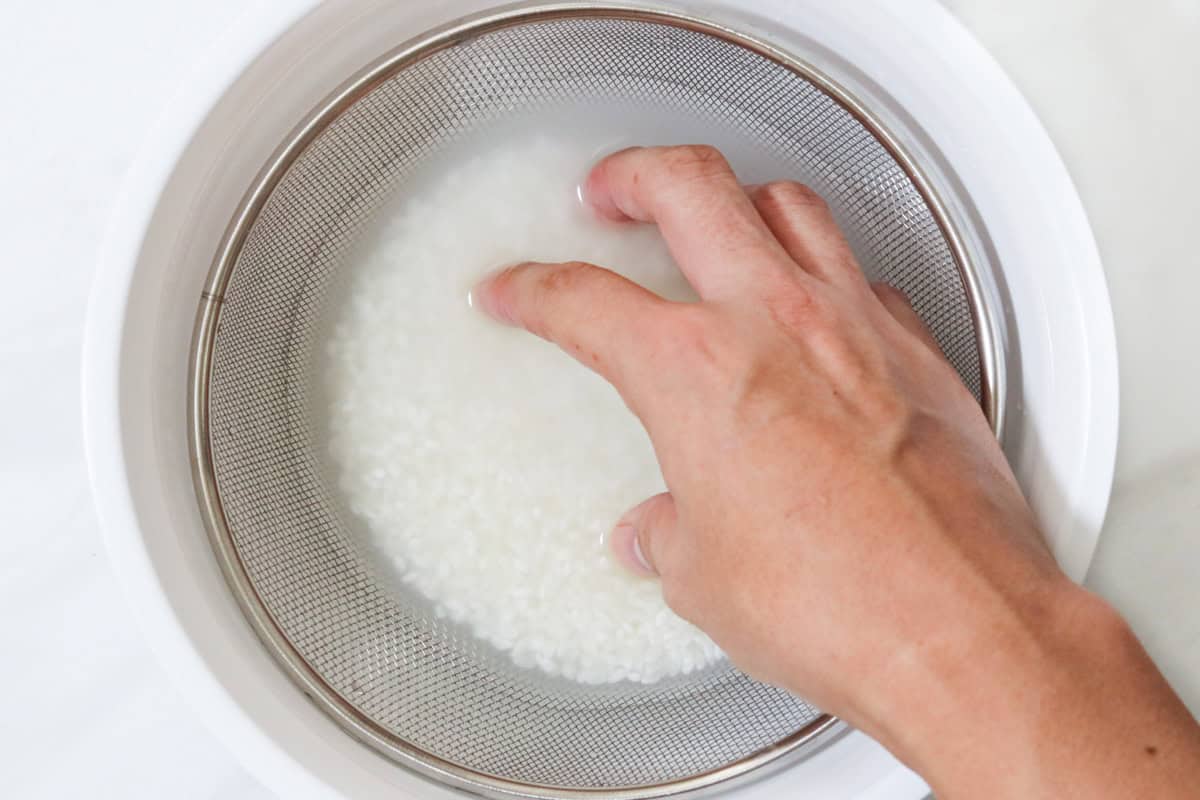
Step 1
Place a sieve over a bowl, add rice, and rinse it with water. Repeat this process several times, changing the water each time.
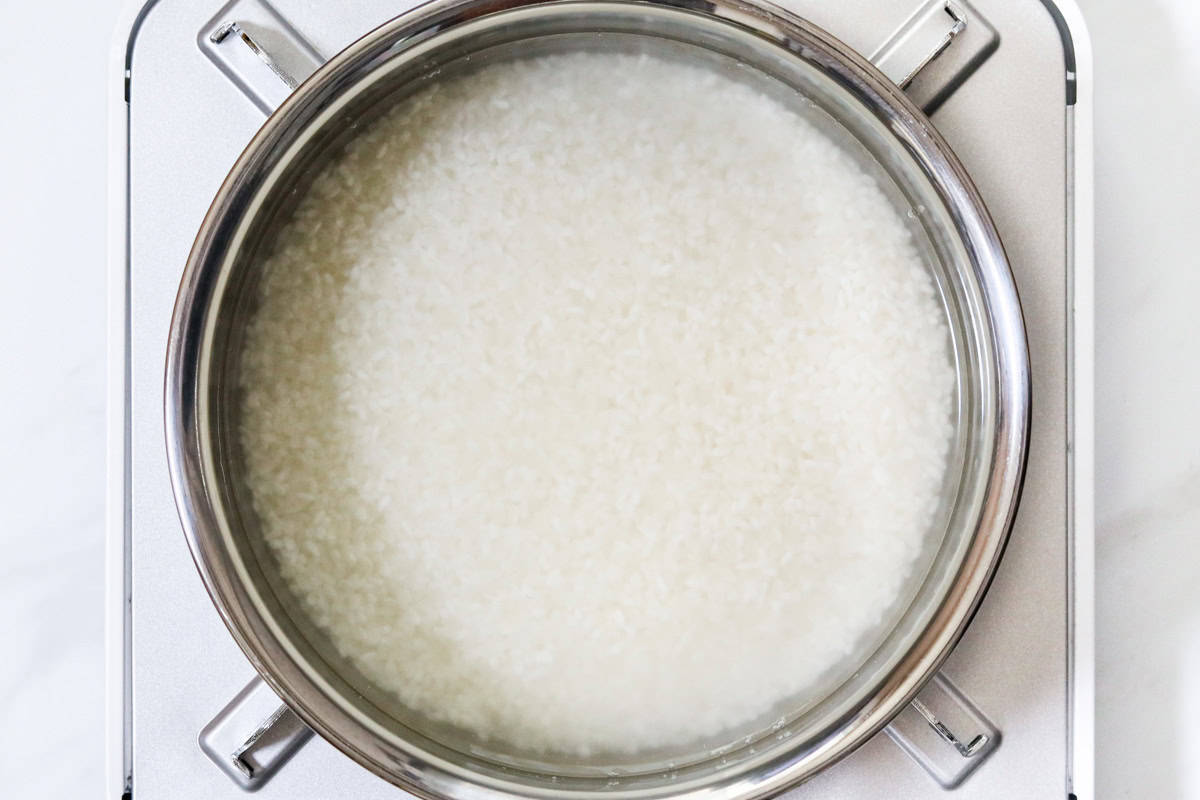
Step 2
Soak the rinsed rice in water in a pot for at least 30 minutes.
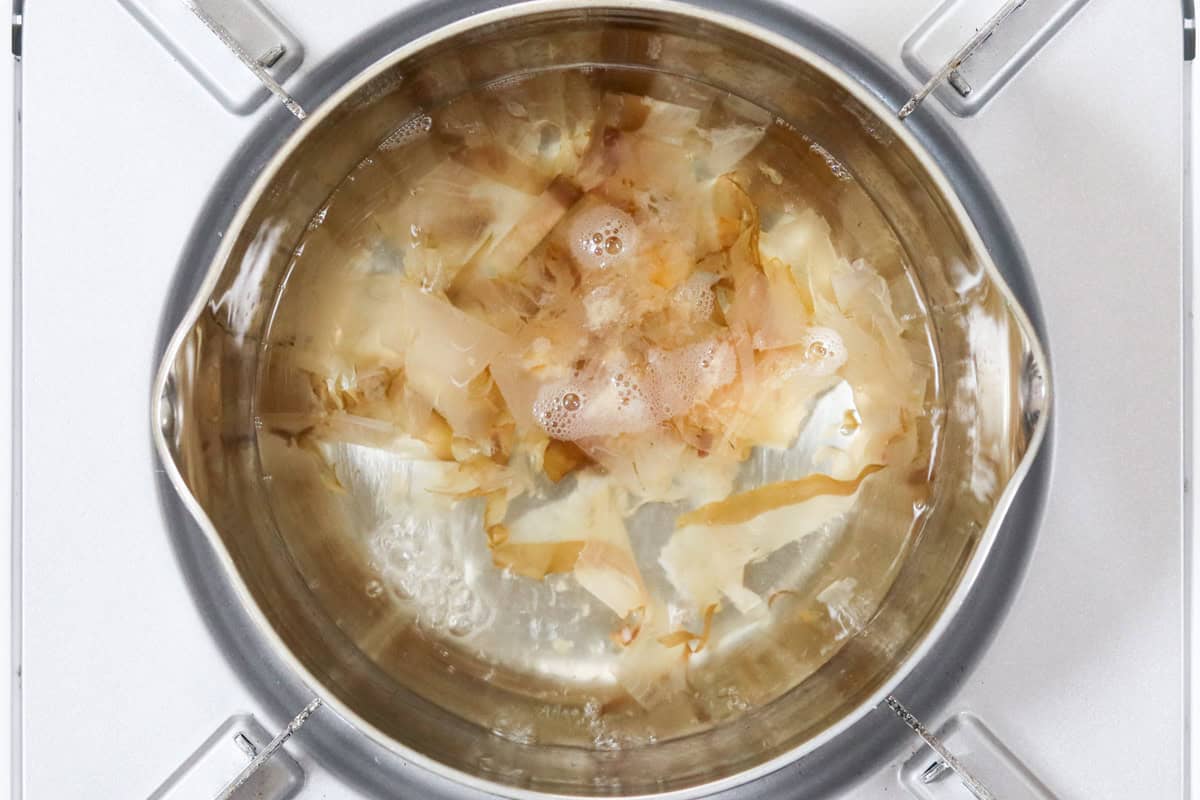
Step 3
Put water (as specified in the recipe) in a pot and bring it to a boil. Once boiling, reduce the heat to low, add bonito flakes, and let it simmer for 3 minutes.
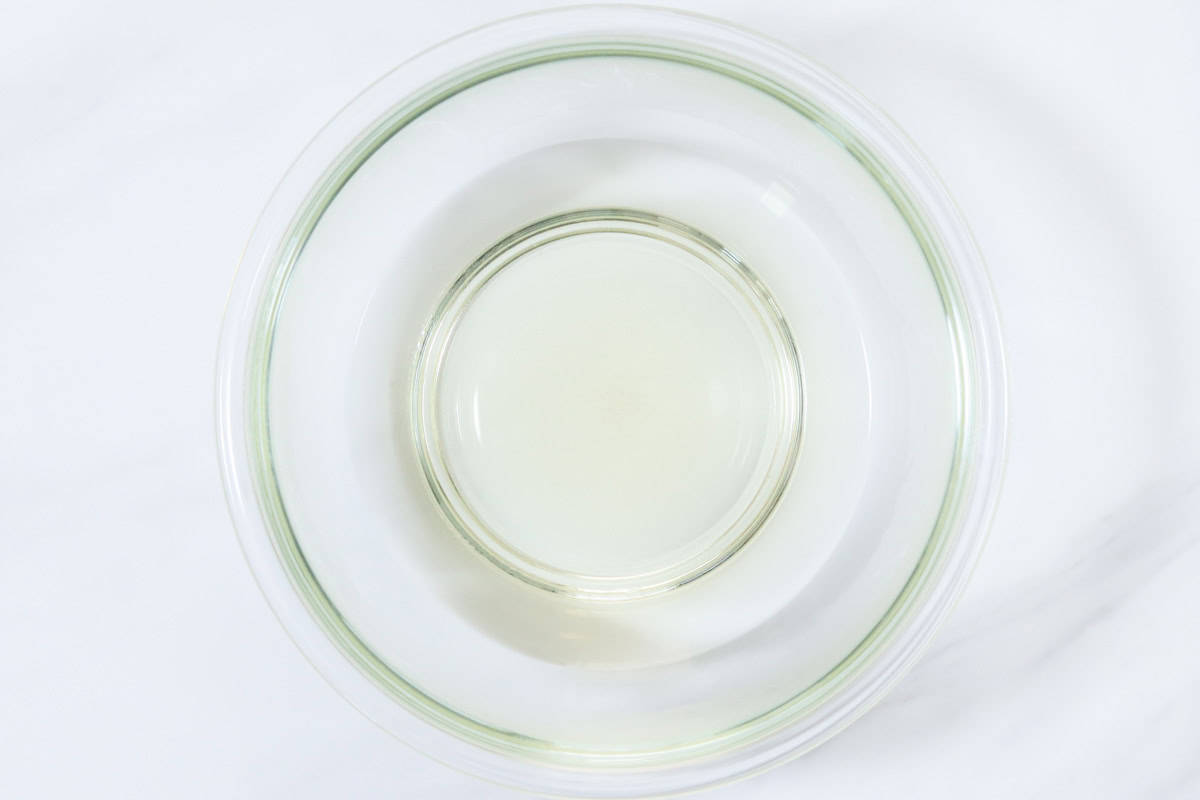
Step 4
Turn off the heat and strain the mixture through a sieve lined with paper towels or a cloth (such as cheesecloth). Alternatively, if you don't mind some fine bonito flakes remaining, you can simply use a fine-mesh strainer. Bonito dashi is now ready.
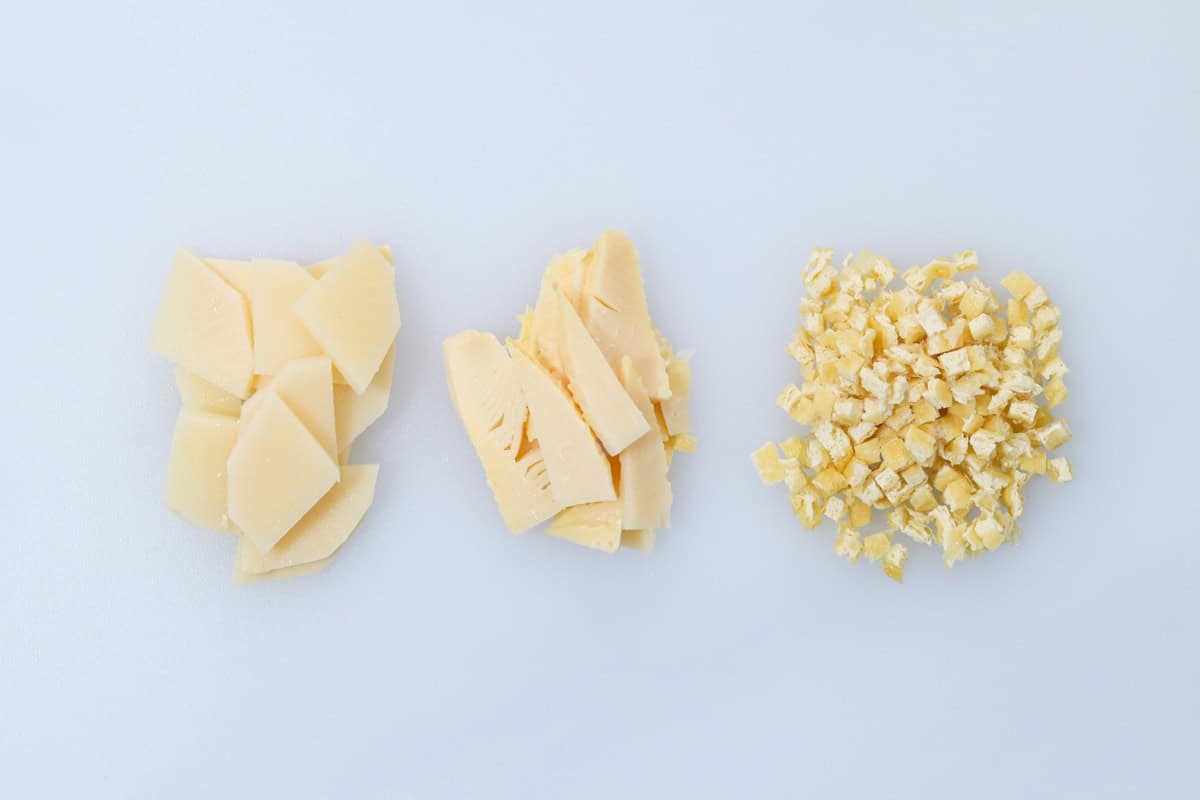
Step 5
Cut bamboo shoots into bite-sized pieces along the fibers for the upper part, about ⅕-inch (5 mm) thick. For the bottom to middle part, slice them into bite-sized pieces against the direction of the fibers, about ⅕-inch (5 mm) thick. Finely chop the aburaage.
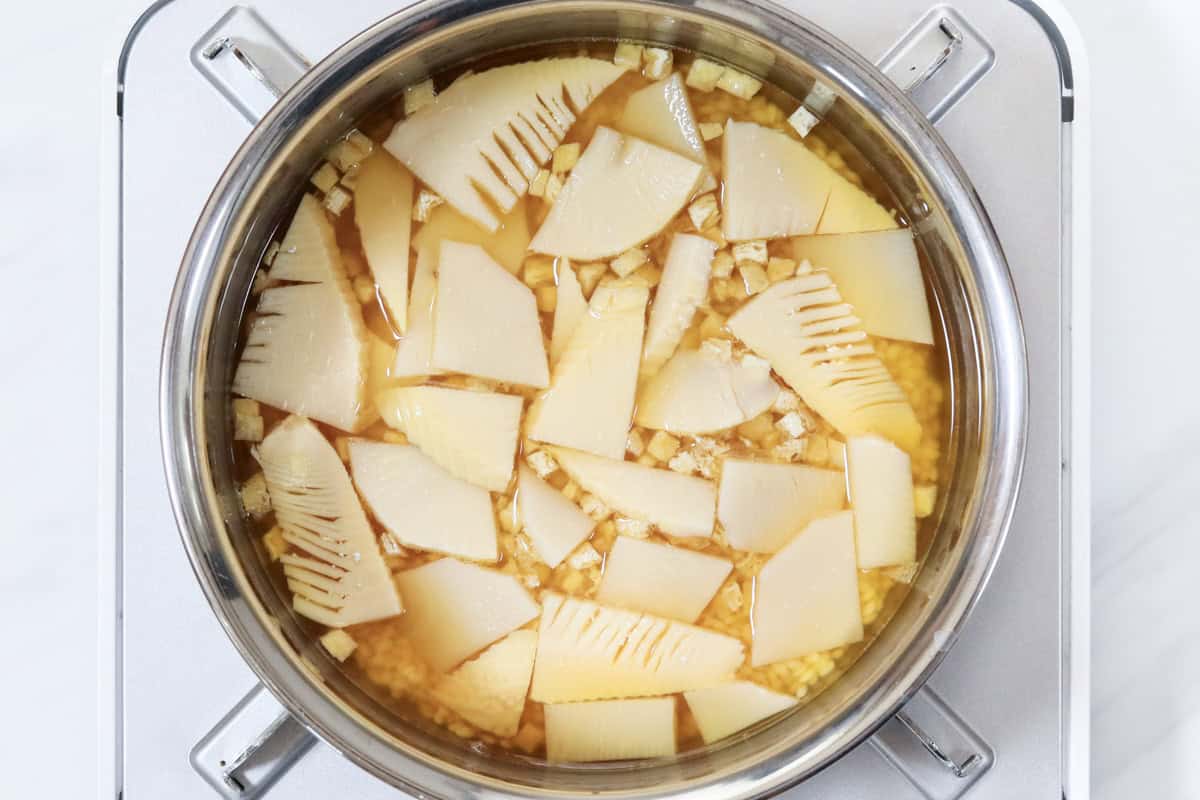
Step 6
Discard the water in which the rice was soaked from the pot. Combine the drained rice with the dashi (⅔ cup/160 ml per 2 servings) and seasonings (sake, mirin, salt, and soy sauce). Then, evenly distribute the bamboo shoots and aburaage on top.
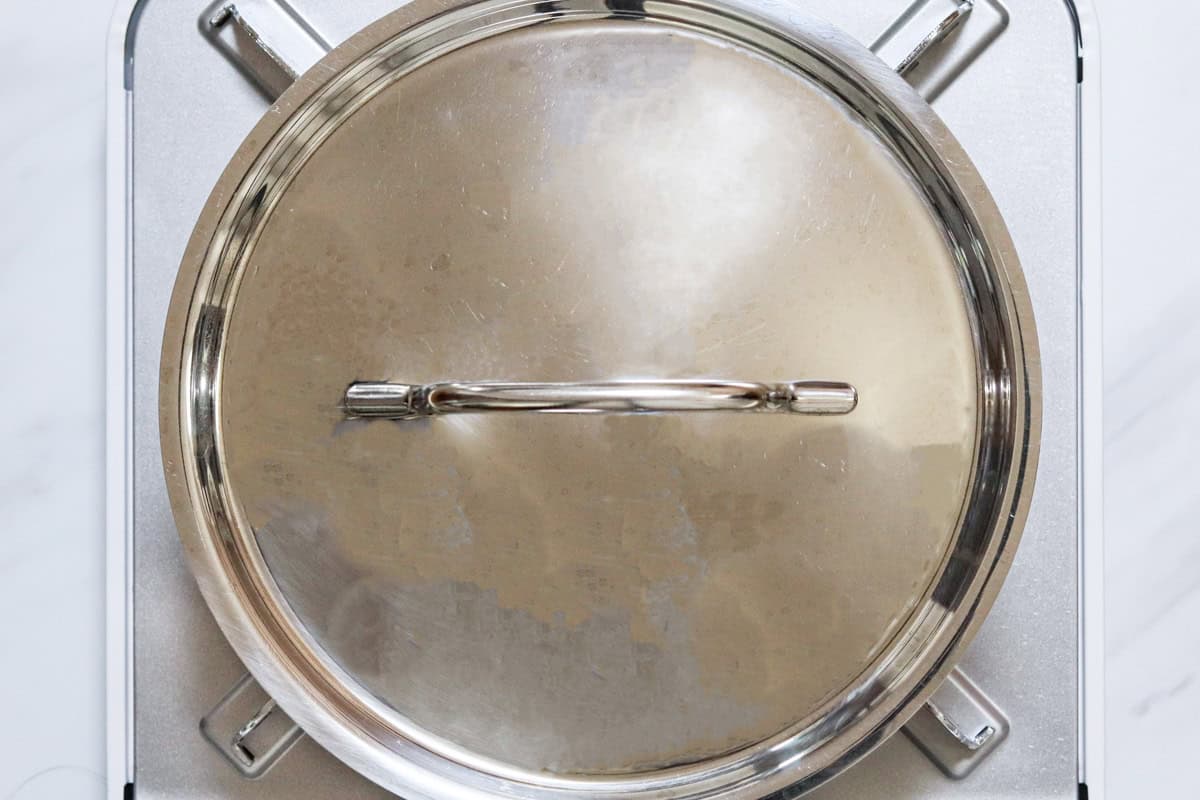
Step 7
Cover the pot and bring it to a boil. Once boiling, reduce the heat to low and continue cooking for 10 minutes, or slightly longer for larger quantities (11 minutes for 4 servings, 12 minutes for 6 servings).
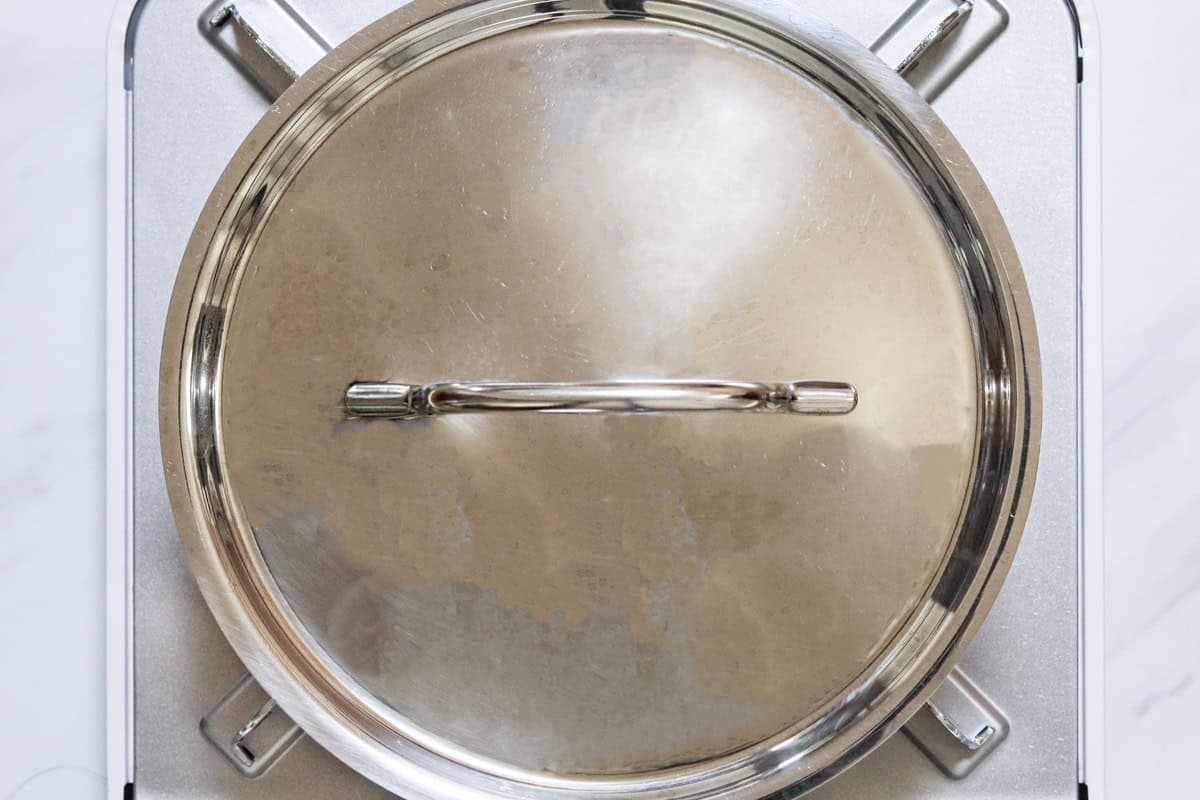
Step 8
Turn off the heat and let it steam for 10 minutes with the lid still on.
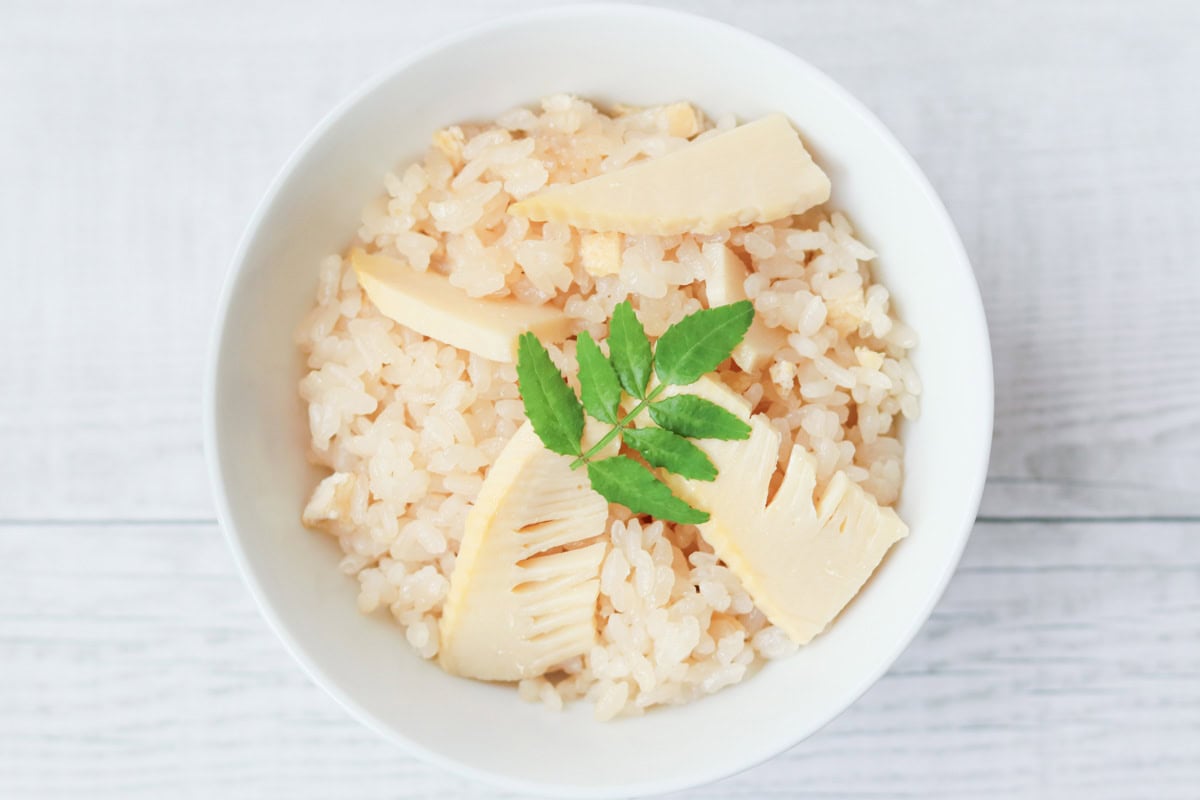
Step 9
Serve in each bowl and top with sansho leaves for color (optional).
To store
You can store it in the refrigerator for up to 2 days.
If you try this recipe, I’d love to hear what you think. Please consider leaving a review and star rating in the comments below. If you enjoyed it, I’d really appreciate it if you shared it with your friends.
Recipe card

Takenoko Gohan (Japanese Bamboo Rice)
Ingredients
- ¾ cup Japanese short-grain rice (1 rice cooker cup for 2 servings)
- 2.8 oz boiled bamboo shoots
- 0.7 oz aburaage (deep-fried tofu sheets)
Bonito dashi:
- ⅚ cup water
- ⅕ cup bonito flakes (katsuobushi)
Seasonings:
- 1 Tbsp sake
- 1 Tbsp mirin
- ½ tsp salt
- 1 Tbsp light soy sauce (You can substitute it with regular soy sauce; the main difference is the color.)
Topping:
- sansho leaves (Japanese pepper)
Instructions
- Place a sieve over a bowl, add rice, and rinse it with water. Repeat this process several times, changing the water each time.
- Soak the rinsed rice in water in a pot for at least 30 minutes.
- Put water (as specified in the recipe) in a pot and bring it to a boil. Once boiling, reduce the heat to low, add bonito flakes, and let it simmer for 3 minutes.
- Turn off the heat and strain the mixture through a sieve lined with paper towels or a cloth (such as cheesecloth). Alternatively, if you don't mind some fine bonito flakes remaining, you can simply use a fine-mesh strainer. Bonito dashi is now ready.
- Cut bamboo shoots into bite-sized pieces along the fibers for the upper part, about ⅕-inch (5 mm) thick. For the bottom to middle part, slice them into bite-sized pieces against the direction of the fibers, about ⅕-inch (5 mm) thick. Finely chop the aburaage.
- Discard the water in which the rice was soaked from the pot. Combine the drained rice with the dashi (⅔ cup/160 ml per 2 servings) and seasonings (sake, mirin, salt, and soy sauce). Then, evenly distribute the bamboo shoots and aburaage on top.
- Cover the pot and bring it to a boil. Once boiling, reduce the heat to low and continue cooking for 10 minutes, or slightly longer for larger quantities (11 minutes for 4 servings, 12 minutes for 6 servings).
- Turn off the heat and let it steam for 10 minutes with the lid still on.
- Serve in each bowl and top with sansho leaves for color (optional).
Notes
- If you already have bonito dashi or another type of dashi, skip steps 3 and 4. In that case, use ⅔ cup (160 ml) of your dashi for 2 servings.
- You can store it in the refrigerator for up to 2 days.

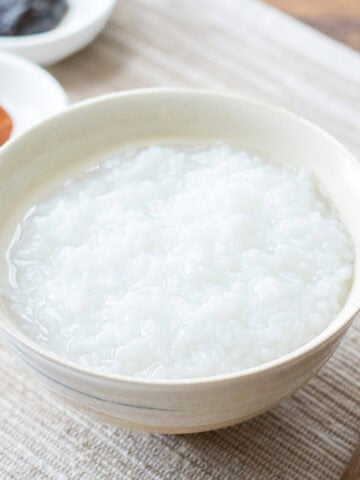
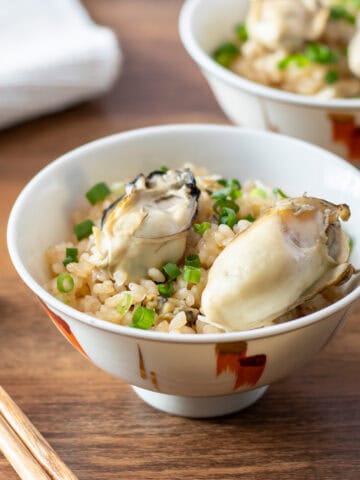
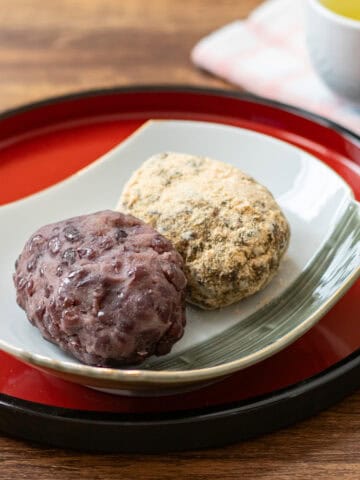
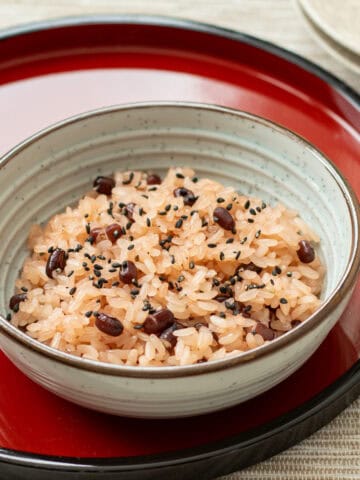
Leave a Rating and a Comment